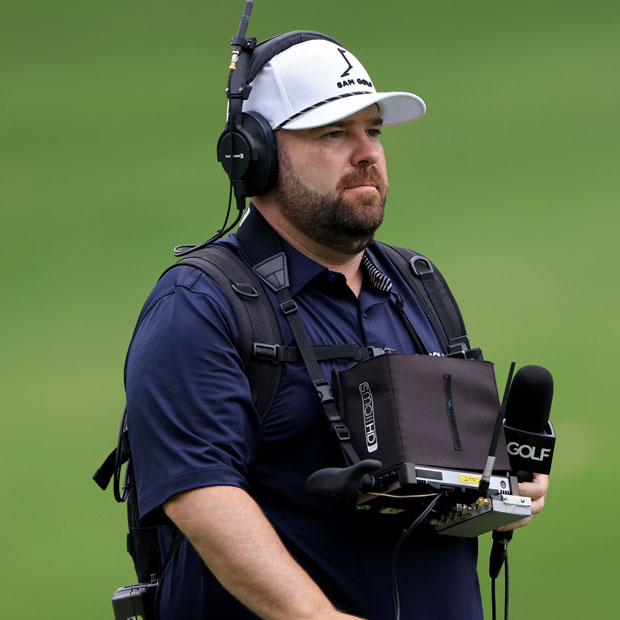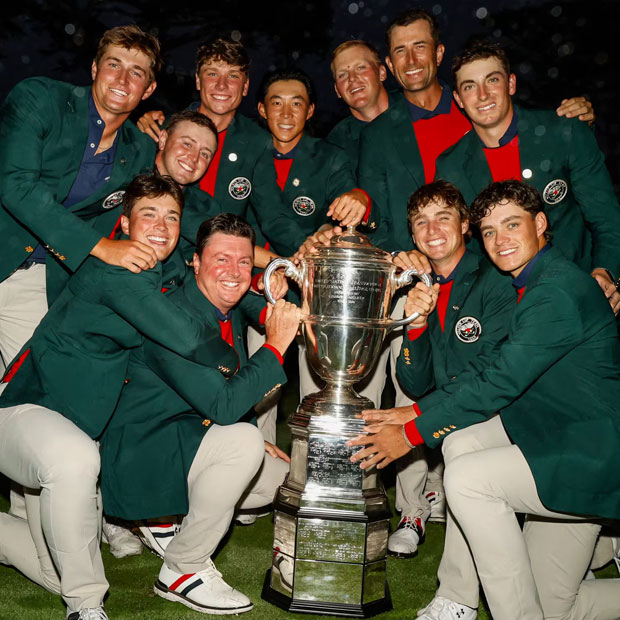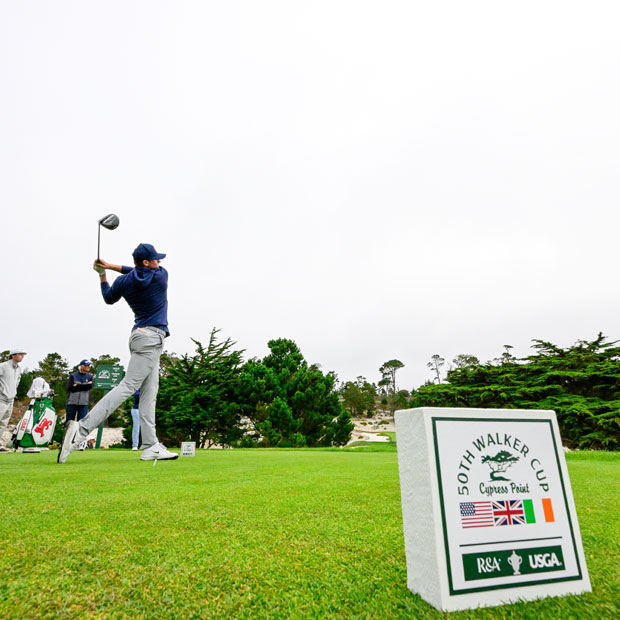Amateur Hour at Augusta National
The most valuable real estate in Augusta isn't where you might think


Like swallows to Capistrano, five of golf’s best amateurs will soon return to the quaint sleeping quarters hidden in the rafters of the Augusta National clubhouse. Inviting future stars to sleep in the Crow’s Nest is among the oldest of Masters traditions, one that resulted from Bobby Jones’s desire to provide affordable room and board for his fellow amateurs. Today’s amateurs still appreciate the below-market pricing, even if most no longer rely on the National’s largesse. NIL golf deals are modest relative to college football, but they’ve grown high enough to fill the pockets of the young men who will be sleeping on Augusta National’s third floor this week.
The majority of NIL agreements in college golf are harmless. Most resemble charitable contributions more than endorsement deals. Money is raised and distributed through a professionally run collective or as part of an existing agreement with alumni or a local business. The money usually arrives at the receiving end with a few requirements attached. Attending a few sponsor events and spending some time at a non-profit may be inconvenient for young Johnny, but Mom and Dad get to breathe a little easier knowing he will need less Venmo support. Stipends of around $5,000 per player are typical for successful golf programs in the power conferences, and amateurs who play their way into the Masters field can comfortably land five-figure deals for their week in Augusta.
No other golf event comes close to matching the audience at the Masters. For marketing executives, the Masters is the forbidden fruit. Only a small group of blue chip companies are allowed to advertise during the limited commercial interruptions of Masters TV coverage. Inside its own gates, Augusta National goes to great lengths to ensure that no branding is visible to Masters patrons. Virtually the only advertising permitted is the branding on the competitors’ clothing. The most valuable real estate in Augusta is the front panels of the player hats. Thanks to NIL, the amateurs now own some of that beachfront property. Thanks to NIL, the amateurs don’t just play with the pros, they look like them.

A handful of amateurs have played their way past the alumni collectives and into more traditional endorsement deals with the leading golf equipment companies and other mainstream brands. Several are rumored to have annual deals approaching $1 million. Whatever the real figures are, they’re enough to attract the schools of agents who are constantly circling college golf. For the agents, NIL rules have changed top amateurs from prospects to clients.
College golfers holding six-figure endorsement deals is a recent development, but the debate over what delineates an amateur from a professional started before the first amateur championship was even held. Members of Royal Liverpool created the first amateurs-only championship in 1885. The R&A and Prestwick began supporting the Amateur Championship the following year. Among the earliest decisions confronting the organizers was determining the eligibility of the men who’d won prize money in the 25 preceding Open Championships that had been played starting in 1860. The reinstated Am was created.
Allan Macfie, winner of that first 1885 Amateur, received a prize of 60 pounds. It’s a noteworthy figure considering Bob Martin received only 10 pounds for winning the Open Championship that same year. It was the start of a debate that will never end. The line delineating amateurs from professionals has shifted constantly in the 140 years that have followed, with several of golf’s biggest names straddling the line.
Francis Ouimet became America’s first golfing hero in 1913, but three years later, the USGA stripped him of his amateur status, citing the benefit his fame was giving to his sporting goods store. Harvie Ward was the two-time defending U.S. Amateur champion when his amateur status was suspended in 1957 for improperly benefitting from a mostly no-show car sales job. The USGA might not be able to fill a full Mid-Am tournament if Ouimet and Ward’s jobs were illegal today.

Tiger Woods wasn’t being paid while he won six straight USGA amateur events, but an eager agent found a crack in the rules just wide enough to slip through a paycheck to Tiger’s father. The move raised many purists’ eyebrows, but the payments had been pre-approved by the unimpeachable Sandy Tatum.
In hindsight, Earl Woods’s consulting contract was an early sign of a change in thinking about how to define amateur vs. professional athletes. Being from a rich family isn’t improper, but it can certainly be an advantage. Was it wrong to prevent other families from trying to level the playing field for their own children? More and more countries were funding national development teams to incubate promising talent. Was it realistic to expect American parents to provide the same level of support? What’s more American than profiting from the results of your own hard work?
Modern technology further complicates how amateurism should be defined. Professional athletes like Tony Romo have always been allowed to compete as amateurs in golf. But what about someone who earns their income from trick shot videos they post online?
It was easy to see why Apple decided to use an image of Lucy Li in a 2019 advertising campaign. Five years earlier, Li had captured golf’s spotlight while competing in the U.S. Open as an 11-year-old. Was Apple hiring Li because of her precocious golfing performance or because of her charming demeanor?
The pro vs. am debate that began in 1885 continues today with no end in sight. That’s a good thing. Golf isn’t supposed to be a fair game, but the opportunity to benefit from one’s own work should be. You can hate the neighbor kid’s Camaro and still respect how many lawns he mowed to pay for it. Golf isn’t perfect, and neither are the USGA or R&A, but they’re both a long par 4 better than the IOC and NCAA.
Delineating amateurs from professionals has always been an inexact science. Clifford Roberts and Bobby Jones weren’t immune to the issue. Jones had been venerated for winning the grand slam as an amateur in 1930. He retired from competitive golf the following year, and his admirers still thought of him as an amateur while he was founding Augusta National and starting his new invitational tournament in the years that followed. But Jones had also accepted payments during that time that were in clear violation of the USGA’s rules on amateur status, most notably starring alongside Hollywood celebrities in a series of golf instruction videos.
Roberts encouraged Jones to play in their new tournament because they both knew it would boost ticket sales for the struggling event. But would the world’s greatest amateur now play as a professional? It’s a question that was never answered. Masters participants weren’t identified as amateurs or professionals in the years Jones played in the tournament. There is no record of Jones being paid prize money, but there’s also no record of who did receive payment from the then cash-strapped club. Sometimes, it’s better not to know.
Leave a comment or start a discussion
Engage in our content with thousands of other Fried Egg Golf Members
Engage in our content with thousands of other Fried Egg Golf Members
Get full access to exclusive benefits from Fried Egg Golf
- Member-only content
- Community discussions forums
- Member-only experiences and early access to events













Leave a comment or start a discussion
Lorem ipsum dolor sit amet, consectetur adipiscing elit. Suspendisse varius enim in eros elementum tristique. Duis cursus, mi quis viverra ornare, eros dolor interdum nulla, ut commodo diam libero vitae erat. Aenean faucibus nibh et justo cursus id rutrum lorem imperdiet. Nunc ut sem vitae risus tristique posuere. uis cursus, mi quis viverra ornare, eros dolor interdum nulla, ut commodo diam libero vitae erat. Aenean faucibus nibh et justo cursus id rutrum lorem imperdiet. Nunc ut sem vitae risus tristique posuere.